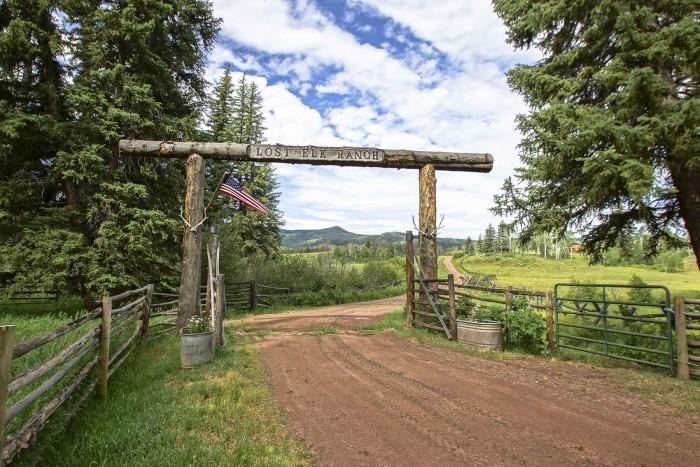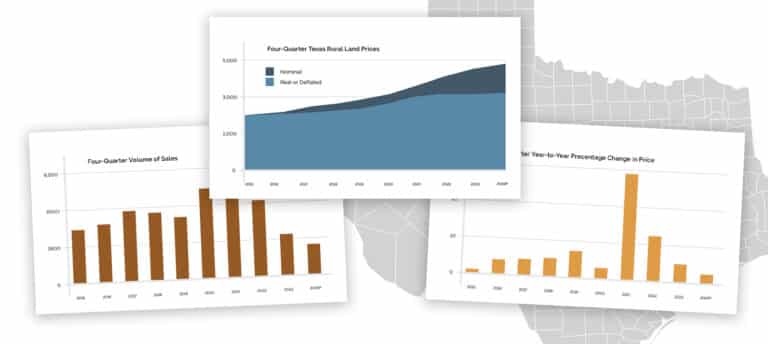
It can be tough to look at the market objectively when you are a seller. It is common to believe your ranch and home is better or more valuable than other similar properties and will sell quickly. Most sellers’ goals are to sell their property for the highest price, and in the shortest amount of time. The challenge is to attractively price your property given the current market. Being realistic and honest about the price your property will sell for is key to getting it sold.
Are you ready to sell?
Are you prepared to sell your property given the current market, or will you want to set a high price on your property to “test the market” for a while? Your motivation to sell will have a big impact on whether your property sells or not—and if it sells in the timeframe you desire. This is a personal decision and highly dependent on “what is next” for you? If you have another use for the money, or a new exciting chapter in your life then your motivation and perspective are different.
There are not many buyers who and say, “Find me an overpriced property to buy”. Are you a seller that says: “I don’t have to sell or need to sell, but if someone comes along and wants to pay above market for my home, then I will sell”? If so, you will probably be waiting a while for the market to rise to your inflated price point, and sometimes due to timing and personal financial or health circumstances this can backfire and result in selling below market value.
Just the facts
- It is a price war and a beauty contest, and as a seller, you have to win both.
- The market will dictate the relative value of your ranch property.
- Buyers don’t care that a seller bought at the top of a market cycle.
- Buyers don’t care how much a seller paid for a property, how much a seller “has in it”, how much the seller’s mortgage is, or how much a seller “needs” to net from the sale.
- Buyers will discount heavily for remediation, or work needed to be completed (and they should since there is risk, effort and dollars in the unknown).
- Buyers want the most for the least.
Similar properties
The best data to help determine market value for a particular property is to look at what “similar” properties have sold recently, and if they are really comparable. Is it a buyer’s or seller’s market? Since supply and demand is always in play, what is the inventory of similar properties for sale? (Your competition). This is not an exact science and the real estate is unique so typically there is a ballpark range. Picking a realistic asking price based on market data will give you a comfort level that your price point is justified when negotiating with a buyer.
Comparables (“Comps”)
The reality is that every home is different, especially ranch properties. Ranches and land in rural areas are not like homes in suburban USA where every home in the subdivision is “very similar” in age, size, finishes, quality, and, yes, price point. When looking at land and ranch properties there may be multiple properties that have sold for a similar price, but are totally different.
Do your homework
Have you gotten an appraisal? Did you contact more than one real estate agent up front to get their Broker Price Opinion (BPO)? Have you contacted your CPA to understand what the tax implications are on any gains? Have you contacted your attorney to review your estate planning, entities, trusts and whether a 1031 exchange makes sense for you?
How many similar ranches have sold in the past twelve months at your price point? What is the value of the land alone, and what is the value of the house and other structures on the property. Can you / should you offer multiple pieces of the ranch separately and will you get a higher price? What is the average and median home price for similar ranch homes? What are the average days on market (DOM) for similar homes, and ranches that have sold, and DOM for those still for sale? This will help you understand how long you can expect your property will be on the market.
Asking price vs. selling price percentage
Look at the recent sales and the percentage difference between the asking and selling price for the same type of properties in your market. You have to determine what the estimated selling price is—and where you want to set the asking price. You may consider setting the asking price above the estimated selling price to give the buyers the cushion equal to the average discount. Another option is to price the property as “priced to sell”. This does not guarantee that buyers will agree with the price, but it’s a good strategy in many cases to attract buyer’s interest.
Days on market – Reverse psychology
Some sellers believe that if their property is on the market too long, then buyers will think there is something wrong with it because it has not sold. There may be some validity to this in a rising market, but in a falling or flat market I have found the opposite is true. The feedback from a buyer will be that the seller must be testing the market, their price is too high, or they are not “ready to sell yet”. The reality is there is probably something wrong with the price, not the home. The solution is usually either adding value to the home or reducing the price. Taking the home off the market is not my recommended solution, because you may miss a buyer. The notion of taking the property on and off the market so it will appear as if it is a new listing is silly in today’s world of digital information. The real estate agent representing the buyer will see this activity and the multiple listings and dates. You cannot catch a fish without a line in the water, and it is very rare to sell a property that is not actively listed for sale.
So how do you determine value for a specific property?
It helps to have a competent real estate agent who knows the market and has been on the ranches or land that have sold that are similar. It is great if there are many transactions to select from, but sometimes this is not the case. Going back two to three years and extrapolating the rise or fall of market prices may be helpful. Looking at similar sold properties in other areas and making adjustments may be helpful and provide some needed data points. Finally, looking at the other similar properties that are for sale, then making adjustments, and applying the average difference between the asking prices and selling prices to the subject property to determine an estimated selling price can be another data point. These three methods taken together should provide a pretty good ballpark for what can be expected as a reasonable selling price given the current market.
Hiring a respected quality appraiser in your area may be the best solution and can be used to justify the asking price.
Price per square foot, price per acres, the good and the bad
This is a useful unit of measure for comparing like ranches and homes, but when analyzing unique properties, or combining both can be tricky. For example if two ranches recently sold, and one included a new large home, nice barn and other structures on a flat plains type ranch, and the other included a historic small home with many old structures on topography that includes grazing, land, hardwoods, and a small lake—these properties would hardly be similar.
READ MORE: How much is an acre of land worth?
What is included/excluded?
There are many variables in the bundle of inclusions and entitlements that may or may not come with the property—is there equipment, livestock, crops, fruit trees, hardwood trees, are there water rights, stream, river, ponds, lakes, marsh, mineral rights. Is the property a prime-hunting ranch—what kind of wildlife birds, fowl, deer, antelope, elk, etc.? Are there areas of the ranch with game fencing? What existing leases are in place for grazing, haying, hunting? What are the total annual income earnings of the ranch?
As a seller, you should put together a detailed list of what is included or excluded and talk this over with your real estate agent. It may be best to separate the real estate from the other items to maximize the net gain.
There are no right or wrong answers when determining asking and selling prices, the end result is the value of a property is worth what one buyer is willing to pay and a seller is willing to accept at a specific point in time.
Chris Kopf is a leading resort town real estate agent. He is also the author of the book, The Complete Guide to Buying Your Mountain Dream Home.
This article first appeared in the fall 2015 issue of LAND magazine. Visit www.landmagazines.com to read more and subscribe to future issues of both LAND magazine and TEXAS LAND magazine.

